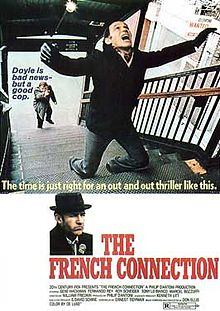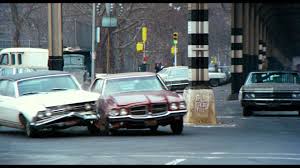
Marlon Brando as Don Vito Corleone; Note the ever present puppet strings in the logo
“I never wanted this for you. I work my whole life, I don’t apologize, to take care of my family. And I refused to be a fool dancing on the strings held by all of those big shots. That’s my life, I don’t apologize for that. But I always thought when it was your time, that you would be the one to hold the strings.” – Don Vito Corleone (Marlon Brando), The Godfather (also explaining The Godfather’s ever present and otherwise random logo with the marionette strings)
What really needs to be said about The Godfather?
1972’s Best Picture is one of the most celebrated and famous movies of all time. It’s a complex and nuanced movie that weaves together family drama and crime thriller, all while offering social commentary on the American dream and 20th century society. It’s filled with magnificent performances, led by the often imitated Marlon Brando as the mumble-mouthed Mafioso don who deep down is a family man trying to provide a better life for his children.

Don Vito Corleone (Second from left) and his three sons, Sonny (James Caan), Michael (Al Pacino) and Fredo (John Cazale)
The Godfather begins in 1945. Don Vito Corleone (Brando) is the head of a powerful crime family. He has four children, including oldest, quick tempered Sonny (James Caan), and youngest, Michael (Al Pacino), plus surrogate son and family lawyer Tom (Robert Duvall). Michael is a returning war hero who is disdainful of his family’s illegal and violent life. When Vito resists urges from other crime families to begin running drugs, an attempt is made on his life and the rest of the family (both personal and professional) are put in jeopardy. Michael, angered by his father’s shooting, retaliates by killing the mastermind behind attempt, The Turk, plus the Turk’s bodyguard cop. Michael must flee to Italy to escape prosecution. Vito, recovered but badly weakened, gives control of the family to Sonny, who in turn is killed. Vito manages to broker a peace between the families so Michael can return to the US. Michael reunites with his girlfriend Kay (Diane Keaton), lying to her that the family is going legitimate, all while taking over his father’s operations and plotting revenge.

Don Corleone is finally shown respect from someone asking for a “favor” in the Godfather’s opening scene
The Godfather is filled with incredible, iconic moments. Much like Casablanca 30 years earlier, the movie opens with a very long set piece (in this case Vito’s daughter’s wedding), that establishes all the principal characters, their relationships to each other and their motivations. The movie opens with a long, single take of an Undertaker, disingenuously asking Vito for help in taking revenge against two men who had attacked the former’s daughter. The Godfather is insulted by the request, since the Undertaker has continuously shown little respect for Vito or his lofty position, until now, when he needs a “dirty deed” taken care of. Vito finally agrees to do so in exchange for a favor. We understand the Godfather’s place as a highly-feared outsider who we still count on to fulfill our darkest desires, and Vito’s own desire to belong to the society that shuns him.
The Godfather is probably most famous for Brando’s performance. What’s surprising when watching the film is that Vito is probably in only half the movie. Aside from a few standout scenes, Vito is recovering from gunshot wounds for a long period of time. But he’s such a strong presence when he’s in the film that he is what stands out most. He is always impeccably polite, almost a kindly grandfather with some peculiar verbal ticks, but he still radiates an air of danger when scolding his children for showing disrespect. The scene where he calmly negotiates peace between the families, while still subtly promising to reign down holy hell if something should happen to Michael is a personal favorite.

One of the few scenes between Pacino and Brando
More than Vito, the movie is about Michael’s descent into the corrupt and dark world of the family business. At the movie’s start, he is openly scornful of his family, telling Kay how much their actions disgust him (he’s even late to his own sister’s wedding!). By the end of the movie, he’s shut Kay out of his world after having all his enemies brutally killed (in the film’s famous closing show, the door is literally closed on a distraught Kay as she realizes Michael is the Godfather now). I really enjoyed the few scenes between Vito and Michael, both because they come from two tremendous actors, but also on the themes they convey: the relationship between a father and son and two businessmen immersed in their trade.

I of course would be remiss in not mentioning the (in)famous horse’s head sequence
It is hard to realize now just how much The Godfather has influenced crime movies that have come since. We all have a short-hand understanding of organized crime’s inner workings, hierarchy and codes of honor, thanks in large part to the Godfather’s influence. The French Connection created the template for police procedurals and The Godfather created a similar template for crime movies. Whereas The French Connection put the spotlight on the chaos of maintaining law and order, so does The Godfather show the rules behind organized crime.
Trivia: One of my favorite pieces of Oscar trivia revolves around The Godfather. When Marlon Brando won the Best Actor award, he declined it, citing Hollywood’s racist depiction of Native Americans, as well as an ongoing conflict between Native Americans and the US government over the former’s treatment. To accept the award, he sent Native American activist Sacheen Littlefeather, dressed in traditional Apache garb.

Yep.
Other Oscars: Best Actor (Marlon Brando); Best Adapted Screenplay
Box Office: $133.7 Million (First for the year)
Other notable films of 1972: Cabaret*; Deliverance*; The Emigrants*; Sounder*; The Discreet Charm of the Bourgeoisie (Notable to Mr. Robot fans, at least); The Poseidon Adventure; What’s Up Doc? ; Conquest of the Planet of the Apes; Play It Again, Sam; Blacula; 1776; Behind the Green Door
*Best Picture Nominee



